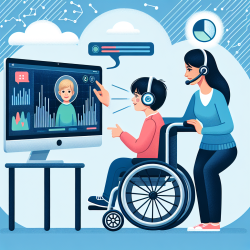Understanding the Role of Mindfulness in Managing Menstrual Pain for Adolescents
Menstrual pain, or dysmenorrhea, is a common issue affecting over 90% of adolescents who menstruate, often leading to significant discomfort and impacting daily activities. Traditional interventions have primarily focused on pharmacological solutions, which may not always be suitable due to potential side effects and accessibility barriers. Recent research highlights the potential of mindfulness-based digital interventions as a promising alternative for managing menstrual pain among adolescents.
Key Insights from Recent Research
A study titled Understanding Adolescents’ Experiences With Menstrual Pain to Inform the User-Centered Design of a Mindfulness-Based App: Mixed Methods Investigation Study delves into adolescents' experiences with menstrual pain and their perceptions of mindfulness as a management strategy. The study utilized a mixed-methods approach, combining surveys and focus groups, to gather comprehensive insights from adolescents aged 13-17 years.
Findings and Recommendations
The research revealed several critical insights that can guide practitioners and developers in creating effective digital interventions:
- Interest in Mindfulness: The majority of adolescents expressed an interest in mindfulness-based strategies for managing menstrual pain, although their understanding and practice of mindfulness varied.
- Need for Personalization: Adolescents highlighted the importance of personalized mindfulness activities that cater to their individual preferences and pain levels. This suggests that digital interventions should offer a variety of mindfulness practices, including both active and passive activities.
- Educational Content: There is a demand for educational content that explains the benefits of mindfulness and provides insights into menstrual health. This can enhance adolescents' understanding and engagement with the app.
- Biopsychosocial Approach: Adolescents recognized the influence of emotional and social factors on their pain experiences. A comprehensive app should address these aspects, offering tools to manage emotions and stress alongside physical symptoms.
Implementing Research Outcomes in Practice
For practitioners looking to enhance their skills and support adolescents with menstrual pain, the following steps are recommended:
- Incorporate Mindfulness Training: Introduce mindfulness exercises in therapy sessions and encourage adolescents to practice mindfulness regularly.
- Utilize Digital Tools: Recommend or develop apps that align with the user-centered design principles highlighted in the research, ensuring they are accessible and engaging for adolescents.
- Provide Comprehensive Education: Educate adolescents about the biopsychosocial aspects of pain and the role of mindfulness in managing these factors.
By integrating these research findings into practice, practitioners can better support adolescents in managing menstrual pain, ultimately improving their quality of life and reducing the impact of dysmenorrhea on their daily activities.
To read the original research paper, please follow this link: Understanding Adolescents’ Experiences With Menstrual Pain to Inform the User-Centered Design of a Mindfulness-Based App: Mixed Methods Investigation Study.










